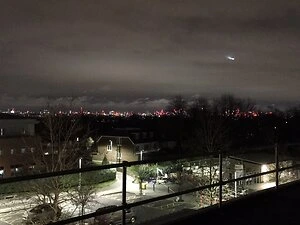Perhaps the commercial condensers shown below are too close to the adjacent 1st floor residential windows? In fact the condensers pre existed the 1st floor residential development that proceeded under permitted development without going through the scrutiny a full planning application would require, leading to a considerable mitigation problem for the ground floor commercial tenant who is responsible the equipment. The Developer did not take the potential for condenser noise into consideration as the commercial unit was vacant at the time of the residential development:
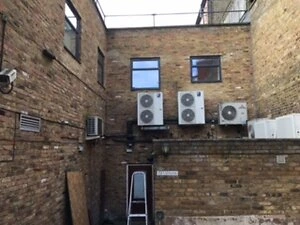
Double sets of security gates at a project at a Police facility, there was no leaving/arriving this location in a hurry:
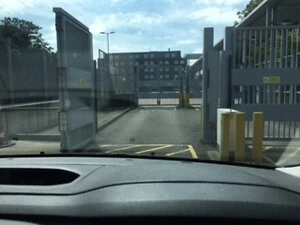
Using a impact hammer to help quantify the transfer function from a double height basement to the residential dwellings located on the floors above:
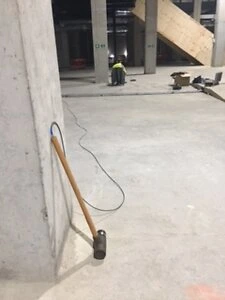
And the action shot!
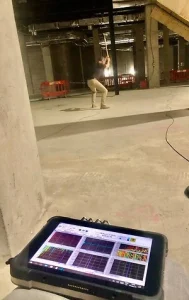
A very good pre-completion sound insulation test result at a Taylor Wimpey development. Substantially better than the minimum requirements for Building Regulations.
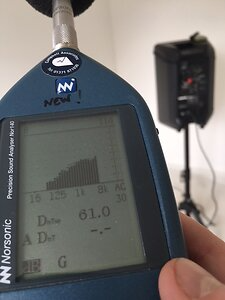
An Atlas material handler in the process of manoeuvring a car to be crushed or "baled" (as seen in the James Bond movie Goldfinger and also Vincent and Jules's car in Pulp Fiction. After 30 years in business this scrap metal industrial unit is now required to apply for planning permission every 5 years, which seems somewhat draconian to me:

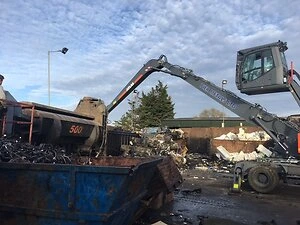
New sound source and tapping machine for sound insulation testing in grey and orange livery, nice!
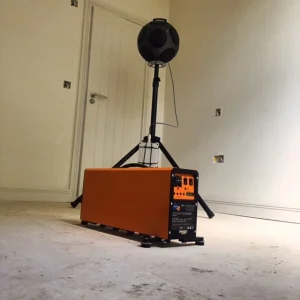
The ghost of a tapping machine, or rather the effects of its previous presence. The machine incorporates a line of five hammers that drop in a calibrated and continuous sequential cycle onto the floor surface. The vibrations from the repeated impacts of the hammers cause the dust to displace leaving five neatly dust free mini craters.

Preliminary site works at a huge development location in Kent. The earthworks shown are part of preparations for an extensive distribution centre. Always loved Tonka Toys!
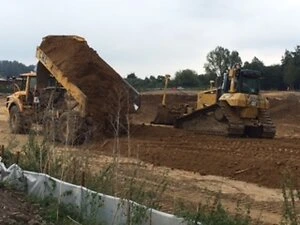
Noise At Work assessment for the conductor of this school orchestra...
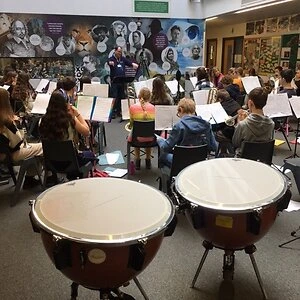
Night time view of towards London from the roof of a temporary modular operating theatre at Queen Marys Hospital, Roehampton. The facility was originally installed under emergency arrangements (without conventional planning permission) to help cope with increased demand due to the pressure of the Covid pandemic on hospital resources. The services plant serving the development had no acoustic attenuation and had to run off of a temporary generator as there was insufficient power available locally. Following the granting of planning permission to remain for a further 3 years, a dedicated substation is to be installed and the building services plant attenuated to now meet planning requirements.
